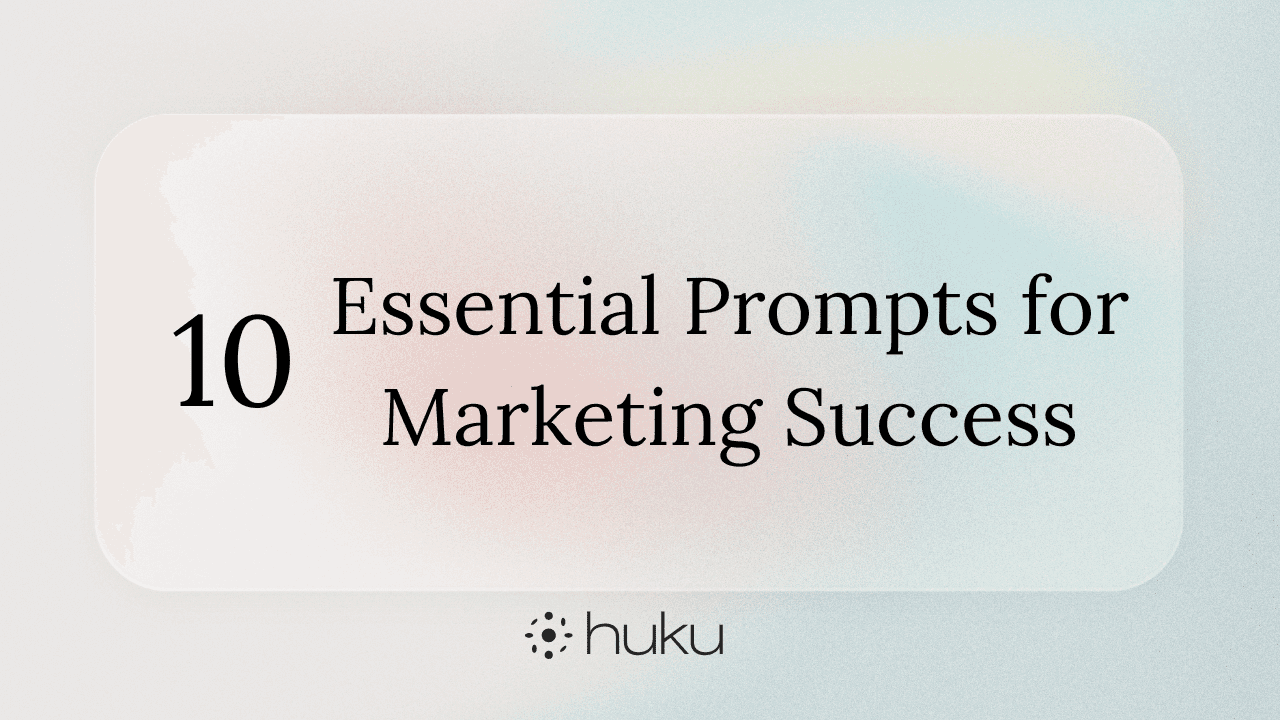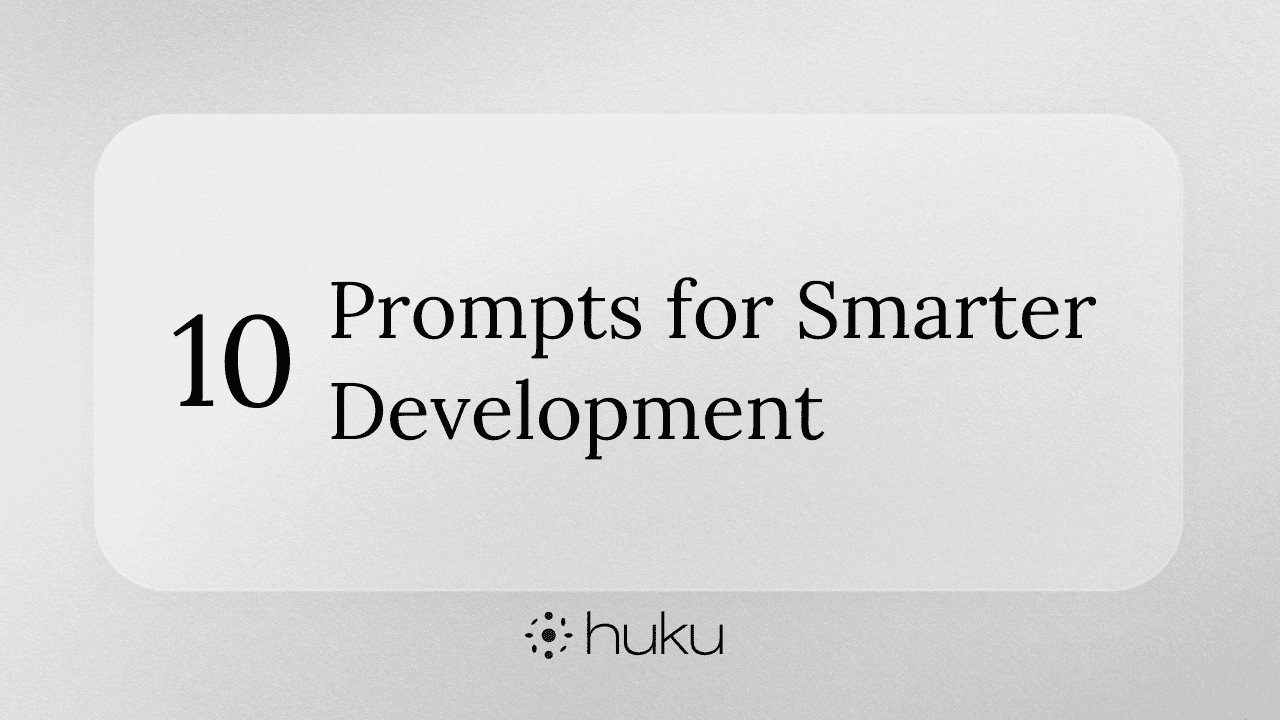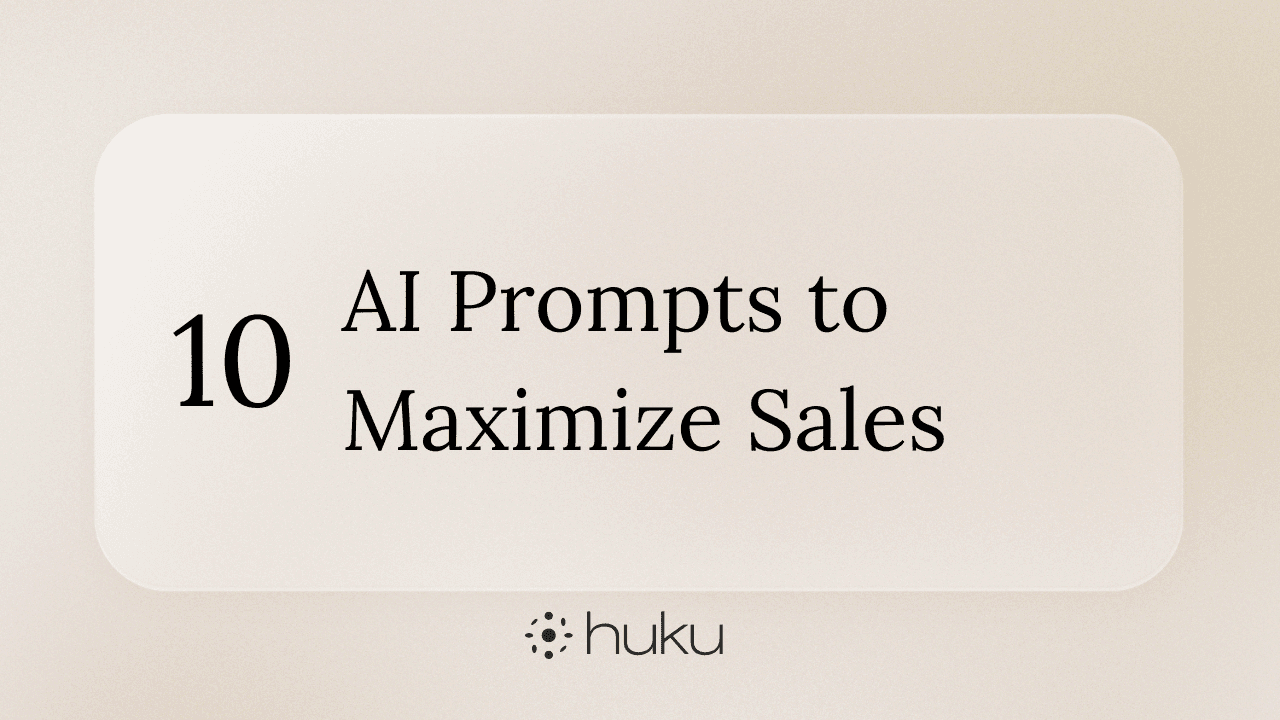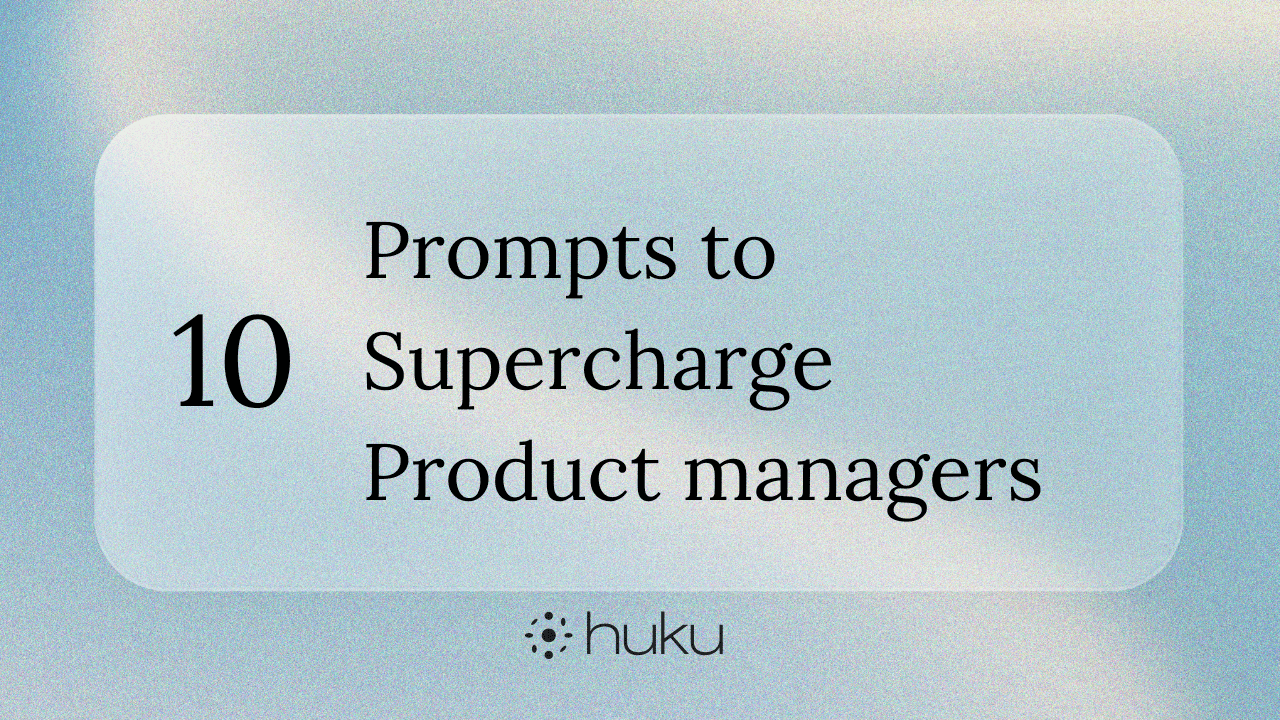AI Applications
AI Prompts for Marketing: 10 prompts to Transform Campaigns from Good to Great
Author
Nov 24, 2024
Marketers constantly juggling multiple campaigns, trying to create engaging content, and working to understand our audience better. If you've ever found yourself staring at a blank screen, wondering how to write that perfect email subject line, or spending hours analyzing customer data, you're not alone. That's where AI comes in – not as a magical solution, but as your clever assistant that can help turn your marketing ideas into reality.
We've spent countless hours experimenting with AI prompts to find what actually works (and what doesn't) in real marketing scenarios. This isn't about replacing your marketing expertise – it's about amplifying it. Think of these prompts as your secret recipes for getting AI to understand exactly what you need.
Why This Guide Is Different
You've probably seen plenty of generic AI marketing tips floating around. But here's the thing – we're not going to talk about vague concepts. Instead, we're sharing battle-tested prompts that we've refined through real campaign work. These are prompts that have saved marketing teams hours of work and helped create campaigns that actually connect with audiences.
Why human in the loop in marketing matters
Before we dive into the specific prompts, let's talk about what AI can really do for your marketing (and what it can't):
✅ What AI Does Well:
- Turns your rough ideas into polished first drafts
- Helps you understand patterns in your customer data that you might miss
- Takes care of repetitive tasks so you can focus on strategy
- Gives you different perspectives on your marketing approach
❌ What AI Still Needs You For:
- Understanding your brand's unique voice and values
- Making strategic decisions about your campaigns
- Adding that human touch that makes marketing authentic
- Bringing creativity and emotional intelligence to your content
10 Game-Changing AI Prompts for Your Marketing
1. Content Creation That Connects
Creating engaging content that resonates with specific audience segments is often time-consuming and complex.
Prompt: "Create engaging blog post content for [target audience] addressing [specific pain point]. Include: 1) Attention-grabbing headlines, 2) Real-world examples, 3) Actionable tips, and 4) Natural calls to action."
This prompt generates focused, audience-centric content by combining specific pain points with actionable solutions, ensuring the output is both practical and engaging.
Example: "Create a blog post for e-commerce managers struggling with cart abandonment. Include industry statistics, psychology behind abandonment, and 5 proven strategies to improve checkout completion rates."

2. Audience Analysis That Matters
Understanding complex customer behavior patterns and turning them into actionable insights requires a structured approach.
Prompt: "Analyze customer behavior patterns in [specific segment] considering: 1) Purchase history and triggers, 2) Engagement touchpoints, 3) Communication preferences, and 4) Pain points expressed in feedback. Categorize findings by priority and actionability."
Why it works: This prompt transforms raw customer data into structured insights by focusing on specific behavioral patterns and their practical applications in marketing strategy.
Example: "Analyze behavior patterns of subscription-based software users who have been customers for 6+ months, focusing on feature usage trends and correlation with renewal rates."
3. Email Campaigns That Convert
Personalizing email campaigns at scale while maintaining engagement and conversion rates is a crucial challenge.
Prompt: "Design a 5-part email sequence for [customer segment] that nurtures [specific goal]. Include: 1) Subject line variations, 2) Personalization elements, 3) Segment-specific pain points and solutions, 4) Progressive CTAs, and 5) A/B testing variables."
Why it works:This prompt creates comprehensive email campaigns by combining personalization with strategic nurturing elements, ensuring each touchpoint builds toward conversion.
Example: "Design an email sequence for B2B software buyers who downloaded a whitepaper, nurturing them toward a product demo request."
4. Social Media Content That Engages
Maintaining consistent, engaging social media presence across platforms requires strategic content planning.
Prompt: "Create a 2-week social media content calendar for [platform] targeting [audience]. Include: 1) Daily themes, 2) Content mix (edu:entertainment:promotion 70:20:10), 3) Trending topic integration, and 4) Platform-specific engagement hooks."
Why it works:This prompt balances content variety with strategic planning, ensuring consistent engagement while maintaining brand voice across platforms.
Example: "Create a LinkedIn content calendar for a B2B SaaS company targeting IT decision-makers, focusing on cloud security trends and implementation best practices."
5. Ad Copy That Drives Action
Creating compelling ad copy that stands out while meeting platform requirements and driving conversions.
Prompt: "Generate ad copy variants for [platform] campaign targeting [audience]. Deliver: 1) 5 headlines, 2) 5 primary text versions, 3) 3 CTA options, and 4) 3 description variations. Focus on [specific value proposition] and comply with [platform] guidelines."
Why it works:This prompt creates diverse yet focused ad copy options by systematically addressing key components while maintaining platform compliance and conversion focus.
Example: "Generate Meta ad copy variants targeting small business owners interested in automated accounting solutions, emphasizing time-saving benefits and easy integration."

6. Landing Page Optimization
Creating high-converting landing pages that align with campaign objectives and user expectations.
Prompt: "Design landing page content for [product/service] targeting [audience]. Structure: 1) Above-fold hook, 2) Problem-solution framework, 3) Social proof elements, 4) FAQs addressing objections, 5) Multi-level CTAs, and 6) Trust indicators."
Why it works: This prompt ensures comprehensive landing page coverage by addressing all conversion elements while maintaining user journey flow and psychological triggers.
Example: "Design landing page content for a digital marketing course targeting beginners, emphasizing practical skills and quick implementation."
7. Customer Feedback Analysis
Extracting actionable insights from diverse customer feedback channels to improve marketing strategy.
Prompt: "Analyze customer feedback from [sources] over [timeframe]. Identify: 1) Recurring themes, 2) Sentiment patterns, 3) Feature requests ranked by frequency, 4) Success stories, and 5) Improvement opportunities with impact scores."
Why it works: This prompt transforms qualitative feedback into quantifiable insights by categorizing and prioritizing customer input for strategic decision-making.
Example: "Analyze last quarter's customer support tickets, review comments, and survey responses to identify key messaging opportunities and pain points."
8. Competitor Analysis
Understanding competitive positioning without losing focus on unique value propositions.
Prompt: "Compare our positioning with top 3 competitors in [market segment]. Analyze: 1) Message architecture, 2) Value propositions, 3) Channel strategy, 4) Content themes, and 5) Customer sentiment. Identify gaps and opportunities."
Why it works: This prompt provides actionable competitive intelligence by focusing on key differentiators and market opportunities rather than feature-by-feature comparison.
Example: "Compare our project management tool's positioning against Monday.com, Asana, and ClickUp in the SMB market, focusing on automation and integration capabilities."
9. SEO Content Optimization
Balancing search optimization with engaging, valuable content creation.
Prompt: "Optimize [content piece] for [target keyword] while maintaining readability. Include: 1) Header hierarchy, 2) Semantic keyword opportunities, 3) Internal linking suggestions, 4) Meta elements, and 5) Featured snippet potential."
Why it works: This prompt ensures comprehensive SEO optimization while maintaining content quality by balancing technical requirements with user experience.
Example: "Optimize our guide on 'remote team management' for search, focusing on emerging hybrid work trends and practical leadership strategies."
10. Campaign Performance Analysis
Turning campaign data into actionable insights for future optimization.
Prompt: "Analyze [campaign] performance focusing on: 1) KPI achievement rates, 2) Conversion pathway analysis, 3) Audience response patterns, 4) Cost efficiency metrics, and 5) Optimization opportunities. Compare against [benchmark] and provide actionable recommendations."
Why it works: This prompt transforms raw campaign data into strategic insights by connecting performance metrics with specific optimization opportunities.
Example: "Analyze our Q4 email nurture campaign performance, focusing on demo request conversion rates and engagement patterns across different industry segments."

Wrapping Up
Here's the bottom line: AI isn't here to replace our marketing expertise – it's here to enhance it. These prompts are your starting point for working smarter, not harder. Start with one or two that address your biggest challenges, and build from there.
Remember, the best marketing still comes from understanding your audience and telling authentic stories. AI just helps us do it more efficiently and consistently.
Explore More AI Productivity Guides
Looking to enhance other aspects of your work with AI? Check out our other comprehensive guides:
For Product Teams
AI Prompts for Product Management: 10 ways to supercharge your product workflow
AI Prompts for Sales: 10 Ways to maximize Your Revenue Generation
The Engineer's Toolkit: 10 AI Prompts for Smarter Development
Stay tuned for more guides on leveraging AI across different roles and industries!
About Huku
Huku is all-in-one AI workspace where teams connect their tools, leverage top AI models, and integrate their knowledge to amplify productivity and tackle complex projects. We're here to help you work smarter, turning complex challenges into manageable wins. Our goal is to augment knowledge workers with human-centric AI experiences that accelerate Human + AI collaboration by automating 80% of repetitive tasks and elevating 20% of strategic work by 10x.
















